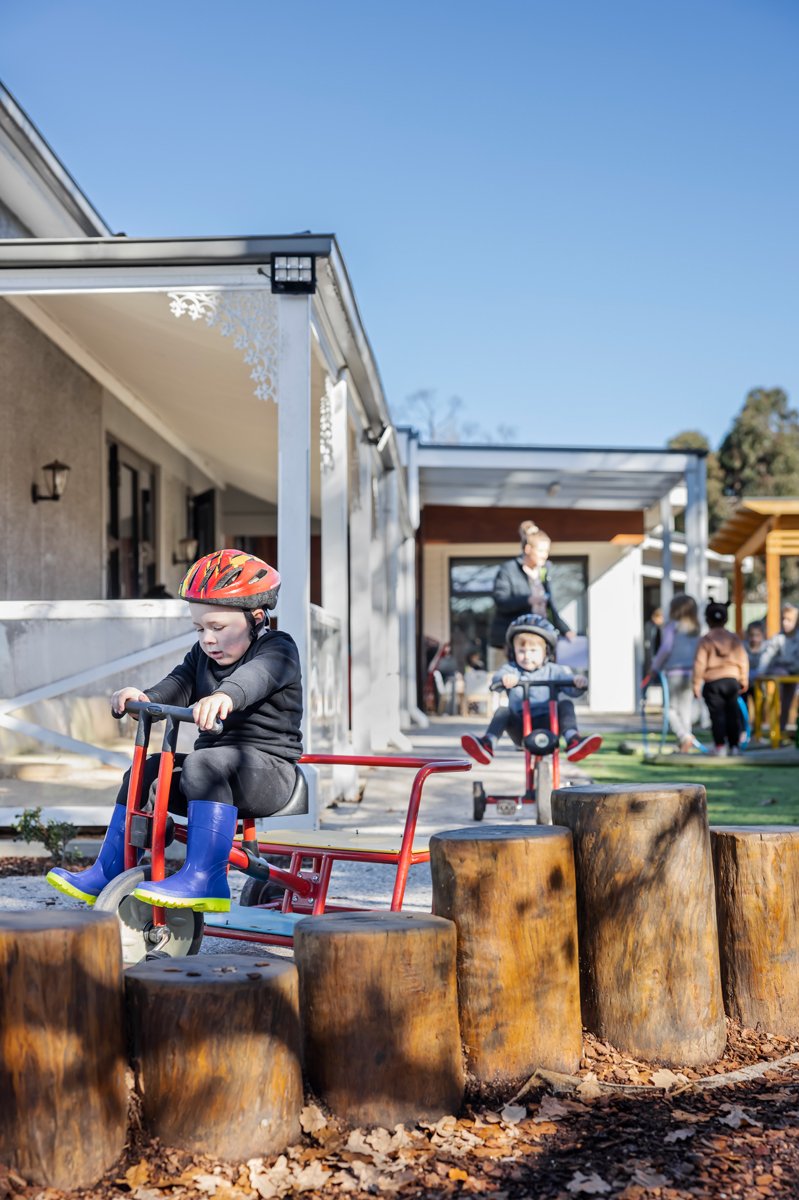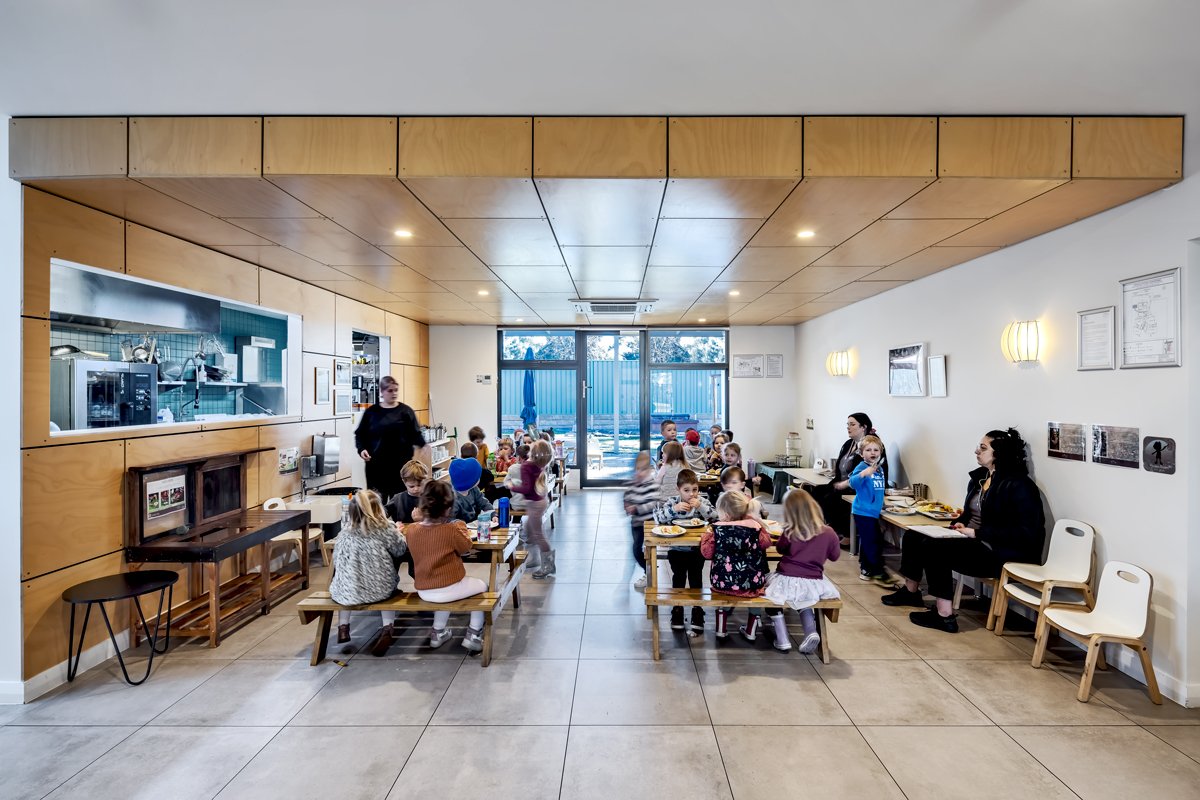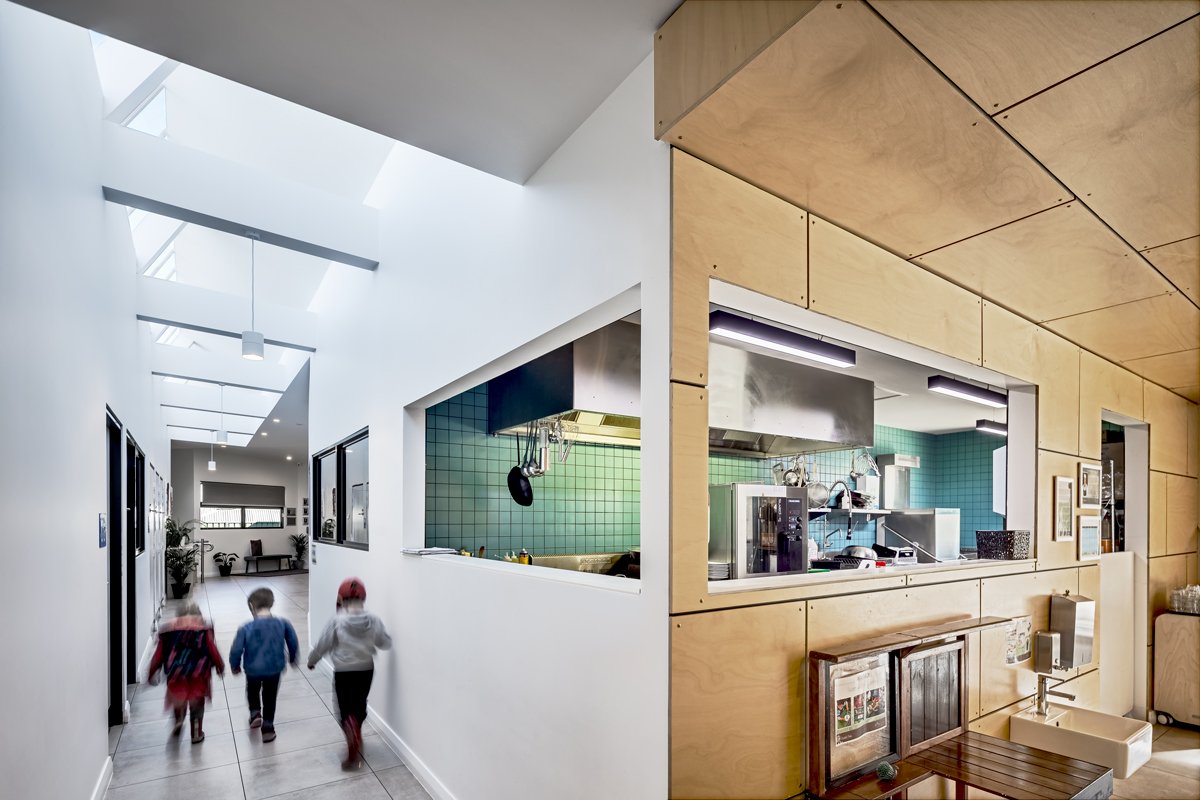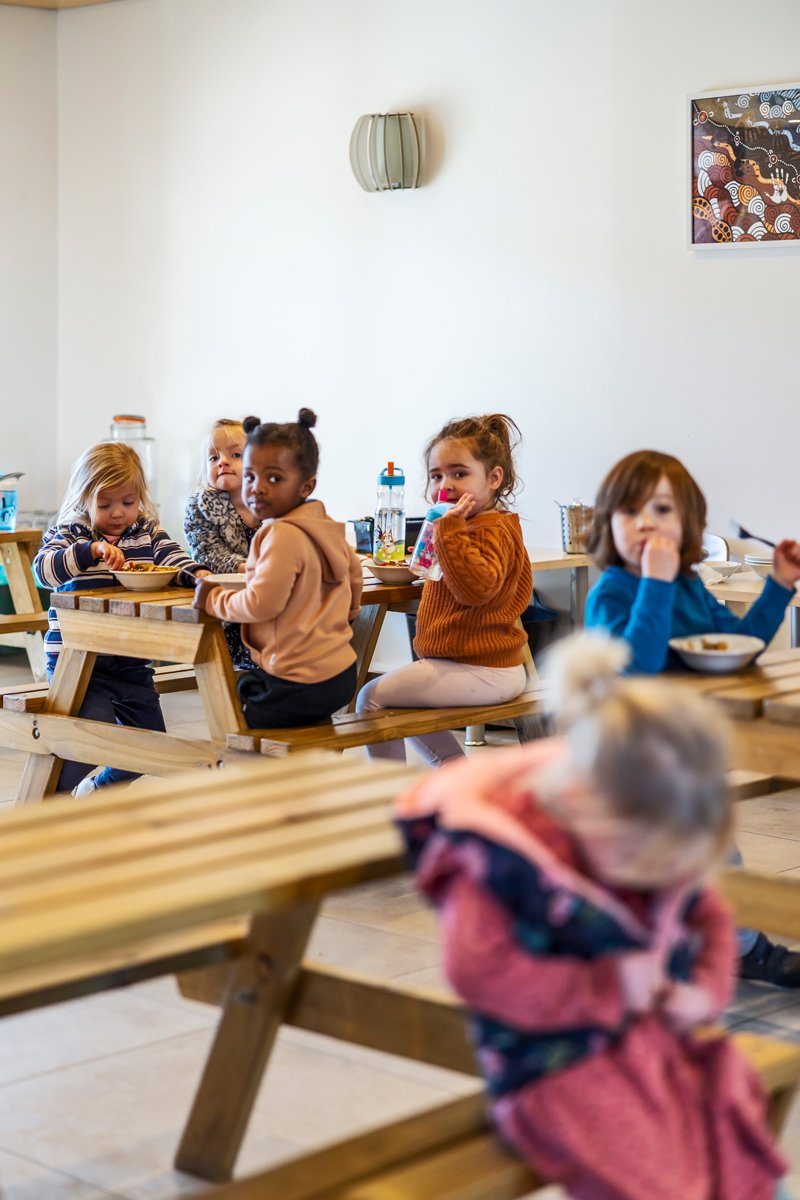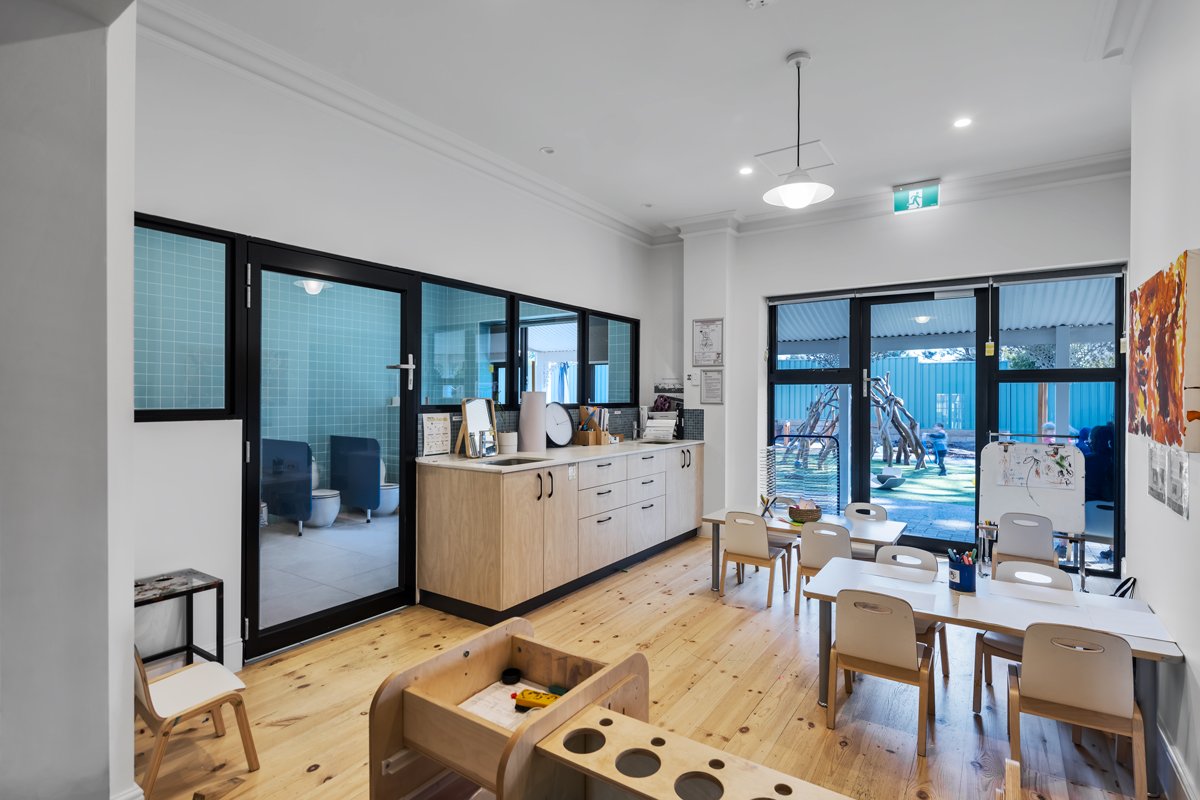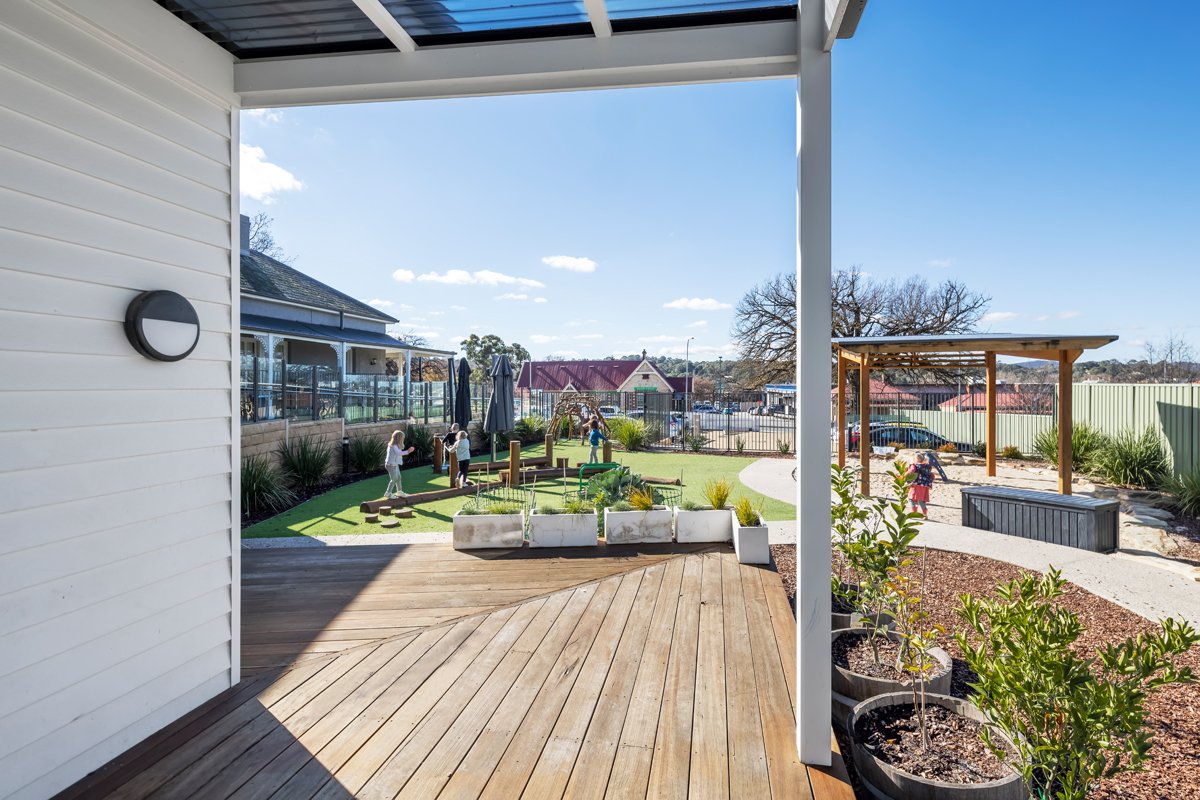Mount Barker Early Learning Centre
Educational / Mt Barker, SA
Photographer: Aaron Citi
We’ve recently been involved in a childcare centre project in South Australia, which we’re very excited to share. This project has allowed our team to continue our exploration into architecture for early education, exploring how internal and external built environments can foster and support early learning.
The centre is located in Mount Barker, in the Adelaide hills and is situated on a large site surrounded by established gums. The site came with some interesting parameters including a busy main road to the east, a reasonable slope across the property as well as a heritage building to be retained and extended to allow for its adaptive reuse.
The expansive, north facing outdoor play space shaded by large deciduous trees.
Through the initial phases of the project, we quickly identified that we wanted to allow the heritage house to be emphasised as the primary architectural expression, with the new addition subtly tucked behind. The range of facilities required, meant there was quite a large building mass to strategically locate. Fortunately the size of the site allowed for the orientation of the building to be opened to both the north and south, allowing views into the adjacent outdoor play spaces and larger trees beyond.
The outdoor play space wraps around the street facing heritage home that has been refurbished and adapted for use as activity rooms.
We visited the centre on a sunny day last winter. It had been in operation for some time by then, so it was great to see the spaces full of life and activity. The large outdoor play space was all action with children engaging with the different play elements, happy to be outside after the prior week of rain. The large deciduous trees are a dramatic feature hanging above the play space with the whole area feeling separate and protected from the busy road and carpark.
The north facing outdoor play space with the heritage building beyond.
The internal layout prioritises connectivity between spaces allowing for effective supervision and ease of movement between facilities for the staff and children. The entry and reception is located within the same space as the dining area and open kitchen, an important central space that all the children visit to eat and engage in food education. The dining area was also strategically placed to act at the same time as a widened corridor, the connection point between the heritage building and the new addition. It has become the informal meeting point where children and staff intermingle on their journeys throughout the day. The visibility from the entry and reception also allows parents popping in to be connected and exposed to the children’s activities.
The dining area as viewed from the reception and entry area. The layout allows for views into the kitchen and through to the outdoor play space.
The corridors were designed to allow a wash of light to filter into the spaces. Rather than solely being circulation space, the larger corridors become congregation areas where parents catch up and children meet before entering their rooms. It feels like its own distinct area which provides variation in the spaces the children inhabit through their days. Highlight windows above and views into a courtyard at the end of the corridor, transforms the circulation space into a visually interesting space that is easily activated and utilised with children’s artwork lining the walls. Service areas are located down the central spine of the building for quick access by teaching staff.
The dining area and kitchen to the right, the wide light filled corridor to the left.
The widened corridor connecting the dining area to some of the activity rooms at the rear of the centre.
The heritage building was in a state of disrepair and required some sensitive improvements to allow the building to be reused. We prioritised retaining the period features internally while opening up the spaces to allow for adequate supervision and connection. The size of the rooms allow for smaller, more intimate group activities.
An activity room housed within the heritage building.
The layout of the facility sees the older children in the heritage building with direct access into the large outdoor play space that holds more challenging equipment. The youngest children are in an area a distance away, which allows a separation between more active, louder spaces and quieter areas for children that require naps during the day. While the rooms were designed to open up to the surrounding outdoor play spaces, they can also be successfully shut down so whole rooms can be transformed into low lit, quiet spaces conducive to transition times into rest.
An activity area within the heritage house connected to the outdoor play space.
Another key design decision we incorporated was locating the reception centrally rather than at the front, within the heritage building. The movement of staff, parents and children are far more efficient due to this. Along with enhancing the efficiency of the building program by reducing circulation space, this also had the benefit of freeing up the whole heritage house to incorporate spaces for children.
The position of the entry and offices means that the director along with the administrative staff can be directly associated to the daily activities of the teaching staff and children. They too are a part of the children’s lives and can facilitate and respond to needs in a more engaged and connected way.
The reception is open, providing connectivity to the surrounding circulation space and dining area. The area is defined by a ply lined ceiling.
The open plan activity rooms allow for flexibility with loose furniture used to define spaces.
The slope of the site was dealt with by providing a ring of ramped corridors. A deck wraps around the south facing activity rooms that connect to the outdoor space, set lower than the building height. This area allows for covered outdoor learning, with views to the tall gums in the distance.
The wide timber deck allowing a space for shaded outdoor activities.
Overall, the layout allows the facility to be effectively moved through and supervised while the open nature of the spaces allow for a broad range of stimulating activities. In addition, we were pleased to see an outcome that highlighted the heritage building, as we’re always in support of the reuse of building stock rather than the disposal of useable building materials.
To read more about our approach to designing outdoor play spaces, you can click here
We’ve also put together some blog posts that describe our approach to designing for the early years of education. Click here to read about our thoughts on childcare design today and here for some words on designing for flexibility.



